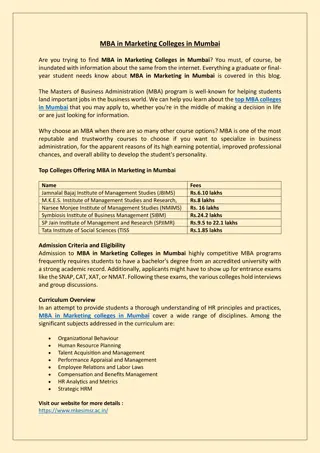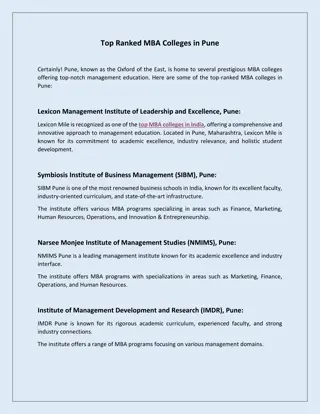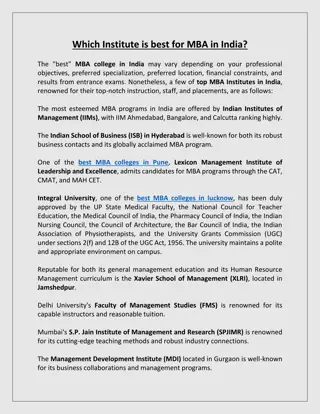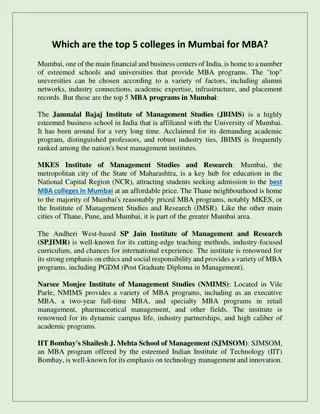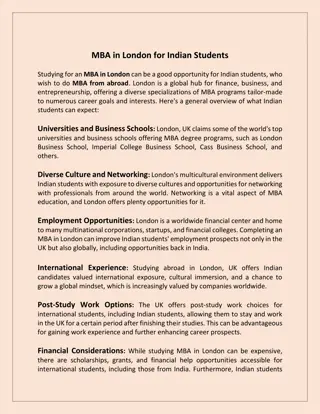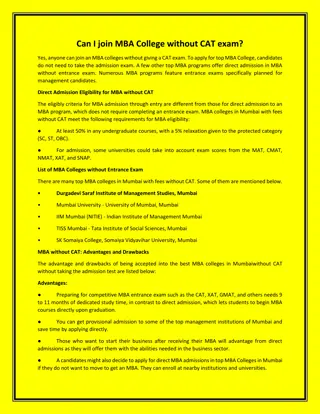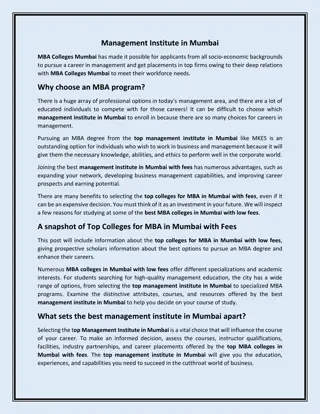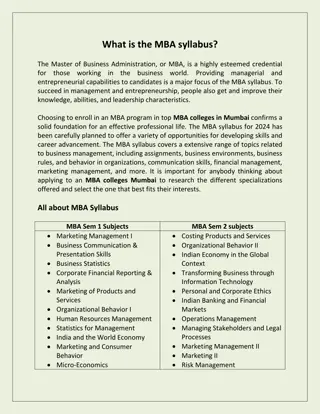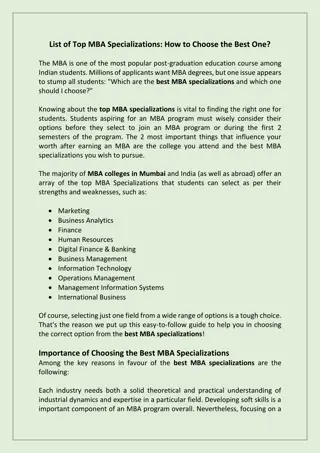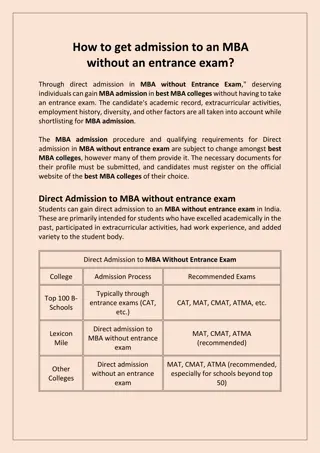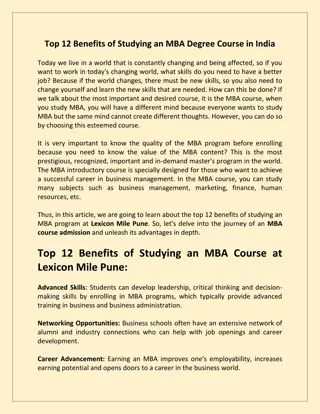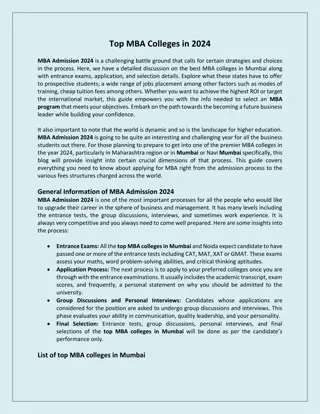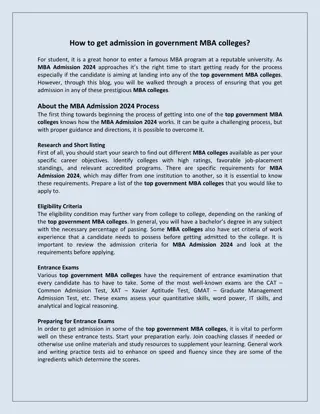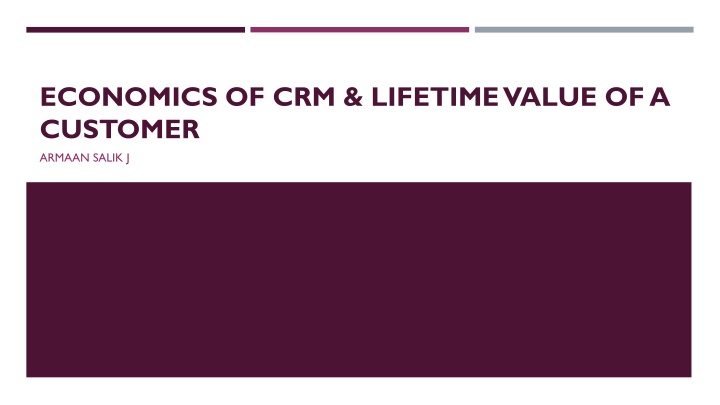
Economics of CRM and Lifetime Customer Value
Explore the significance of Customer Relationship Management (CRM) in business, focusing on understanding and optimizing the financial impact of customer relationships through the Lifetime Value of a Customer concept. Learn how CRM enhances loyalty, reduces costs, and maximizes profitability by analyzing key components and calculating CLV.
Download Presentation

Please find below an Image/Link to download the presentation.
The content on the website is provided AS IS for your information and personal use only. It may not be sold, licensed, or shared on other websites without obtaining consent from the author. If you encounter any issues during the download, it is possible that the publisher has removed the file from their server.
You are allowed to download the files provided on this website for personal or commercial use, subject to the condition that they are used lawfully. All files are the property of their respective owners.
The content on the website is provided AS IS for your information and personal use only. It may not be sold, licensed, or shared on other websites without obtaining consent from the author.
E N D
Presentation Transcript
ECONOMICS OF CRM & LIFETIME VALUE OF A CUSTOMER ARMAAN SALIK J
INTRODUCTION TO CRM ECONOMICS Customer Relationship Management (CRM) focuses on acquiring, retaining, and maximizing customer relationships. CRM economics involves understanding the financial impact of customer relationships on business profitability. Helps businesses allocate resources effectively to optimize customer interactions. Key concept: Lifetime Value of a Customer (CLV/LTV), which quantifies the revenue potential from each customer over time.
IMPORTANCE OF CRM IN BUSINESS Enhances customer loyalty and retention, leading to higher lifetime value. Reduces acquisition costs by focusing on long-term relationships rather than continuous new customer acquisition. Increases customer satisfaction and lifetime profitability by offering better services and engagement. Enables data-driven decision-making through analytics and tracking customer behaviors. Strengthens brand reputation and drives organic growth through positive customer experiences
UNDERSTANDING LIFETIME VALUE OF A CUSTOMER (CLV/LTV) CLV represents the total revenue a business can expect from a customer over their entire relationship. Helps businesses determine how much to invest in acquiring and retaining customers profitably. Provides insight into customer segments that contribute the most value, guiding marketing and service strategies. Ensures businesses focus on high-value customers to maximize returns.
COMPONENTS OF CUSTOMER LIFETIME VALUE Average Purchase Value The average revenue generated per transaction. Purchase Frequency The number of times a customer makes a purchase in a given period. Customer Lifespan The length of time a customer remains engaged with the business. Profit Margin per Customer The net profit derived from each customer s purchases after deducting costs. Discount Rate Adjusts future cash flows for time value of money (used in more advanced CLV models).
FORMULA FOR CUSTOMER LIFETIME VALUE (CLV) CLV = (Average Purchase Value) (Purchase Frequency) (Customer Lifespan) (Profit Margin) Example Calculation: Average Purchase Value: $50 Purchase Frequency: 4 times per year Customer Lifespan: 5 years Profit Margin: 30% CLV = $50 4 5 0.3 = $300 Businesses use this formula to evaluate different customer segments and optimize retention strategies.
ECONOMIC IMPACT OF HIGH CLV Higher customer retention reduces marketing costs since acquiring new customers is more expensive than keeping existing ones. Increases revenue through repeat purchases and customer advocacy. Enhances brand reputation and encourages word-of-mouth referrals, leading to organic business growth Improves overall business profitability by optimizing customer relationship strategies. Enables businesses to predict future revenue and allocate budgets effectively.
STRATEGIES TO IMPROVE CLV Personalized Marketing Leverage customer data to tailor promotions and recommendations. Customer Engagement Build strong relationships through loyalty programs, social media interactions, and regular communication. Quality Customer Service Quick response times and effective problem resolution improve satisfaction and retention. Cross-Selling & Upselling Encourage customers to explore additional or premium offerings. Retention Programs Implement discount offers, subscription models, or rewards programs to maintain customer interest. Reducing Churn Identify at-risk customers early and take proactive steps to re-engage them.
CRM TECHNOLOGIES & CLV OPTIMIZATION CRM Software: Helps track customer interactions, purchase history, and engagement levels. AI & Predictive Analytics: Enhances customer segmentation and personalizes interactions based on behavior patterns. Automated Marketing Tools: Email campaigns, chatbots, and targeted ads keep customers engaged. Customer Feedback Mechanisms: Surveys and reviews help identify areas for improvement. Data-Driven Decision Making: Businesses use CRM insights to refine customer retention strategies and maximize profitability.
CASE STUDY - CLV IN ACTION Example: Amazon s Customer-Centric Approach Uses AI-driven recommendations to enhance purchase frequency. Offers Prime membership to increase customer lifespan and spending. Implements superior customer service and hassle-free returns to boost satisfaction. Result: High customer retention and long-term profitability, reinforcing its leadership in e-commerce. Learning: Businesses can apply similar strategies to maximize their customer lifetime value.
CONCLUSION CLV is a key metric for understanding and improving customer profitability. Businesses should invest in CRM strategies to maximize CLV and drive sustainable growth. Retaining customers through personalized engagement and superior service is more cost-effective than constant new customer acquisition. Implementing AI-driven analytics, loyalty programs, and proactive service can significantly enhance customer lifetime value.



